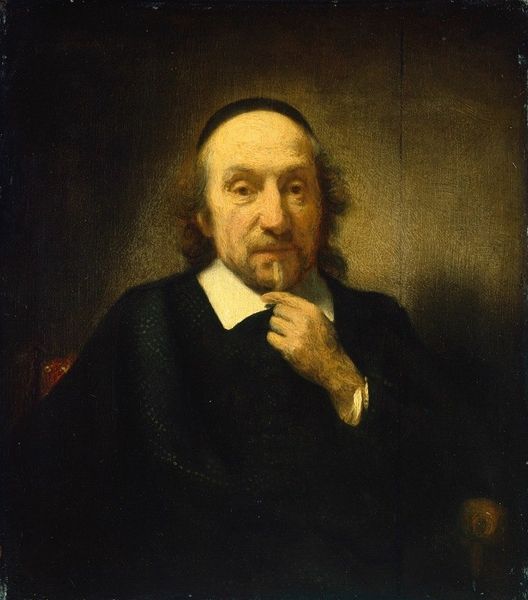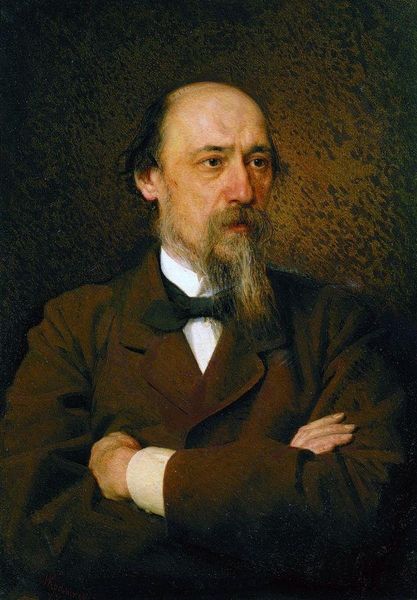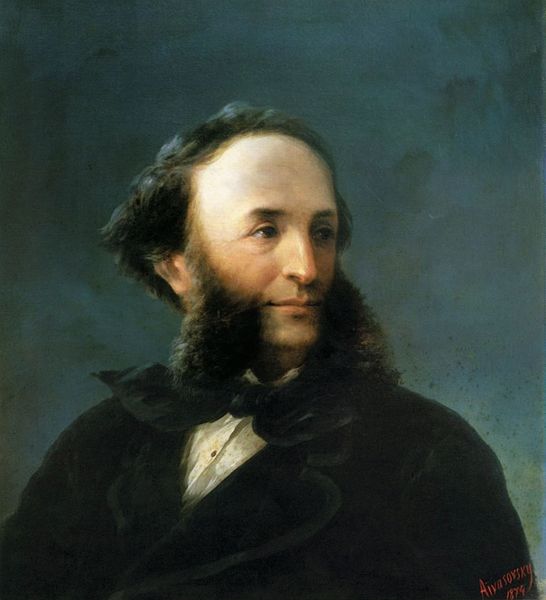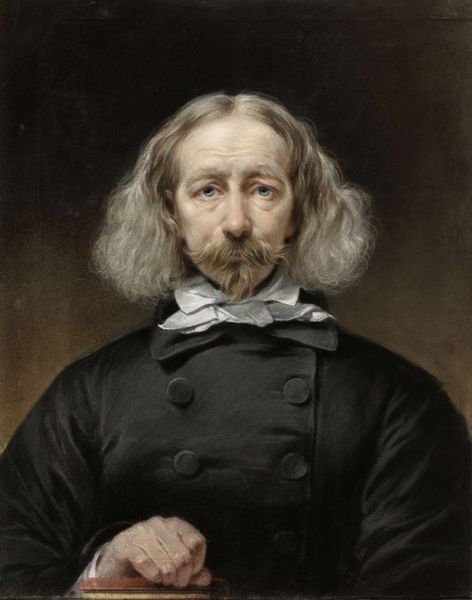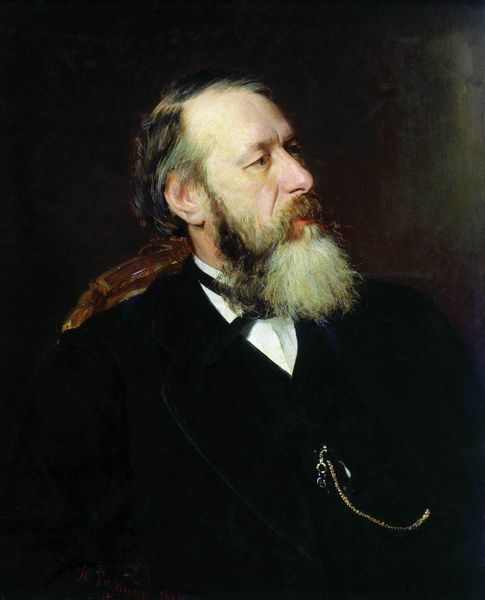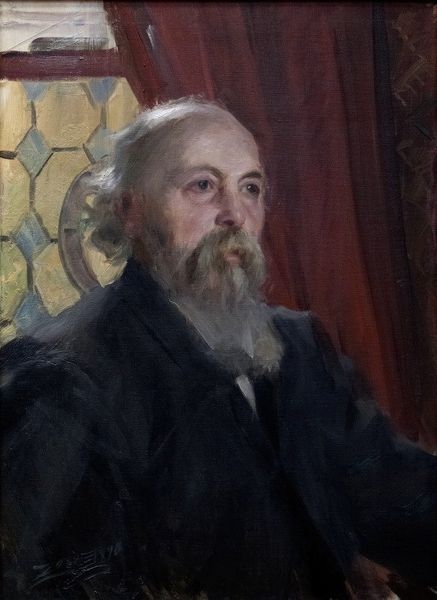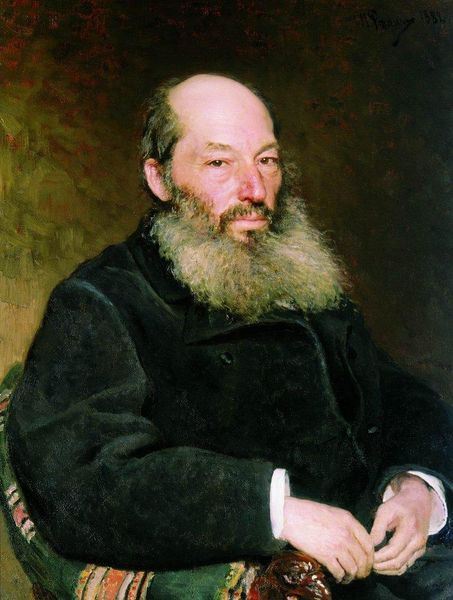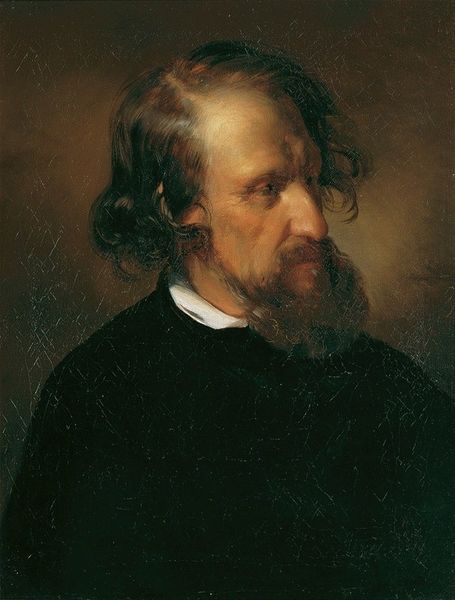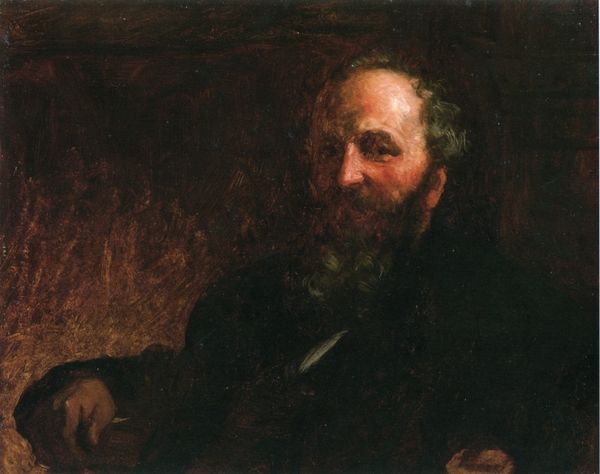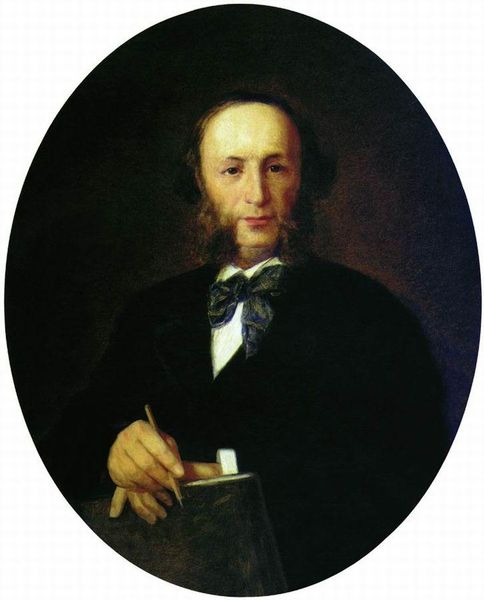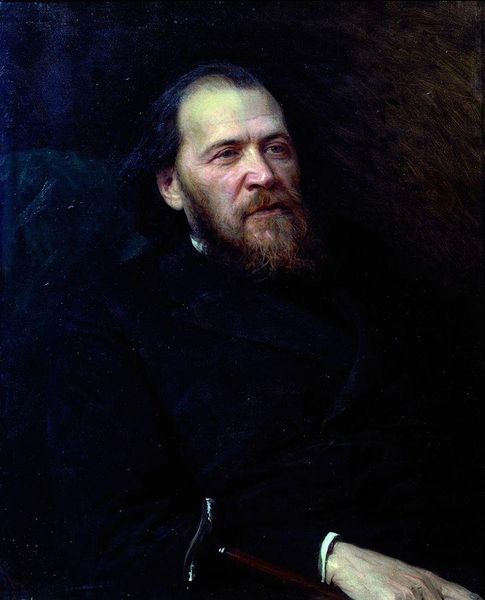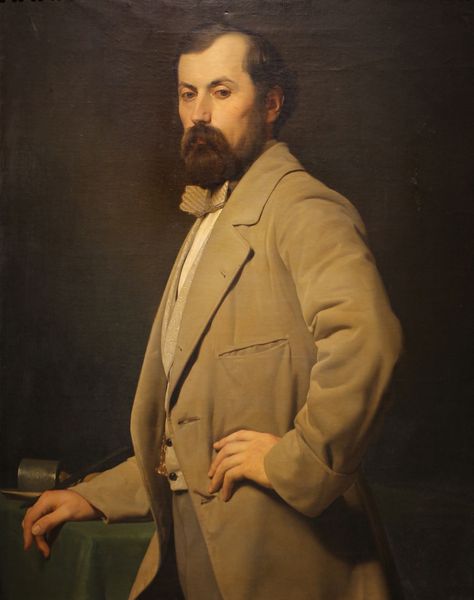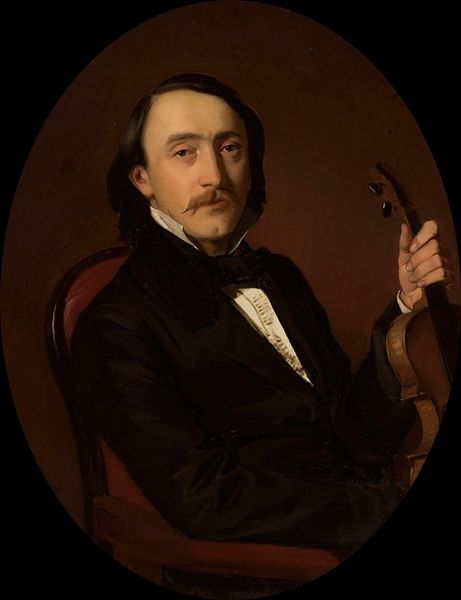
Copyright: Public Domain: Artvee
Curator: Standing before us is Jan Matejko's "Portrait of Leonard Serafiński," an oil painting dating back to 1870. What strikes you first? Editor: There's an overwhelming sense of somber reflection. The figure's dark attire against the muted background casts him in a light that feels almost… prophetic. A world-weariness in his eyes? Curator: Matejko, deeply involved with Polish national identity and its representation in art, frequently depicted figures that resonated with particular socio-political undertones. How does Serafiński's depiction play into that? Editor: I see it possibly as commentary on aging intellectuals. The visible books suggest his involvement with the world of thought, maybe political discourse, though the shadow obscures any active agency, a potent comment on the status of intellectuals during that era of partitions? It makes me think of other portraits of this era like Aleksander Wielopolski that engage directly in controversial debates of that era. Curator: That's a compelling reading. And the romantic influence of the era is palpable in the detail given to conveying depth and character through rendering the subject’s face and hands. Look closely at how they seem almost lit from within. Editor: Exactly! It’s an intriguing contrast to the darker costume, making him present himself more plainly to the viewer while subtly contrasting themes, no? And considering the academic style common then, it's tempting to contextualize Matejko’s work against discussions of identity in a way that invites more inclusive, global understandings of history in general. How do you reconcile that? Curator: Certainly, while he's entrenched in a Polish narrative, his technical skills align him within a broader academic framework shaped by western European schools. But look closer— the gaze is averted slightly. Not confrontational, suggesting perhaps a sense of internal struggle that is separate from his profession. Editor: I find myself circling back to the notion of intellectuals' engagement, or lack thereof, within those contexts. Matejko’s positioning, by depicting the aging Serafinski like this, hints subtly about gendered positions or roles, where it might also subtly consider access within broader power struggles as a person or Poland itself? Curator: A complex painting with multiple avenues of interpretation, for sure. Thanks for joining me on this exploration. Editor: My pleasure. A timely piece given ongoing discourse on art’s role in the political space, indeed.
Comments
No comments
Be the first to comment and join the conversation on the ultimate creative platform.
